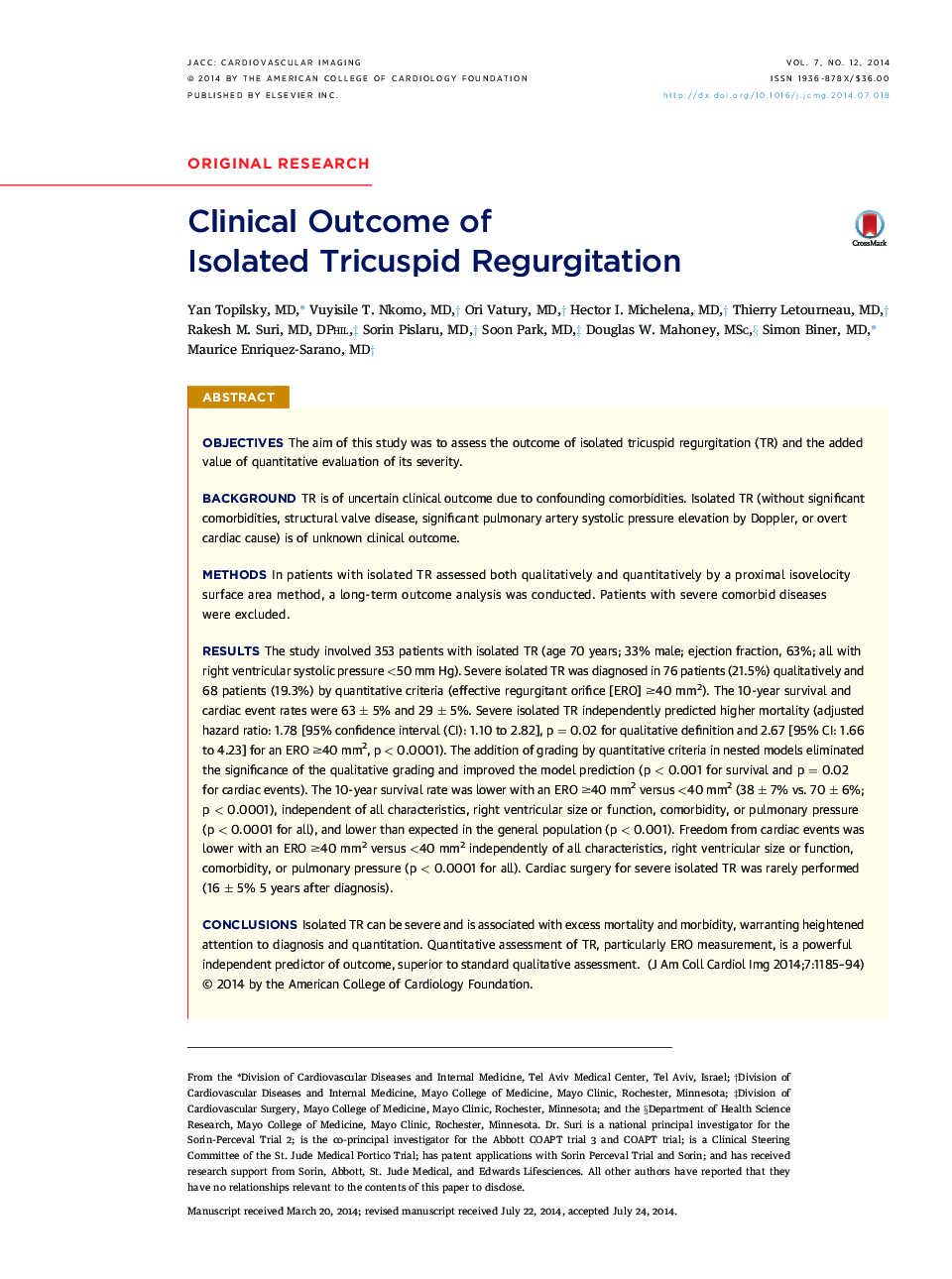| Article ID | Journal | Published Year | Pages | File Type |
|---|---|---|---|---|
| 2938014 | JACC: Cardiovascular Imaging | 2014 | 10 Pages |
ObjectivesThe aim of this study was to assess the outcome of isolated tricuspid regurgitation (TR) and the added value of quantitative evaluation of its severity.BackgroundTR is of uncertain clinical outcome due to confounding comorbidities. Isolated TR (without significant comorbidities, structural valve disease, significant pulmonary artery systolic pressure elevation by Doppler, or overt cardiac cause) is of unknown clinical outcome.MethodsIn patients with isolated TR assessed both qualitatively and quantitatively by a proximal isovelocity surface area method, a long-term outcome analysis was conducted. Patients with severe comorbid diseases were excluded.ResultsThe study involved 353 patients with isolated TR (age 70 years; 33% male; ejection fraction, 63%; all with right ventricular systolic pressure <50 mm Hg). Severe isolated TR was diagnosed in 76 patients (21.5%) qualitatively and 68 patients (19.3%) by quantitative criteria (effective regurgitant orifice [ERO] ≥40 mm2). The 10-year survival and cardiac event rates were 63 ± 5% and 29 ± 5%. Severe isolated TR independently predicted higher mortality (adjusted hazard ratio: 1.78 [95% confidence interval (CI): 1.10 to 2.82], p = 0.02 for qualitative definition and 2.67 [95% CI: 1.66 to 4.23] for an ERO ≥40 mm2, p < 0.0001). The addition of grading by quantitative criteria in nested models eliminated the significance of the qualitative grading and improved the model prediction (p < 0.001 for survival and p = 0.02 for cardiac events). The 10-year survival rate was lower with an ERO ≥40 mm2 versus <40 mm2 (38 ± 7% vs. 70 ± 6%; p < 0.0001), independent of all characteristics, right ventricular size or function, comorbidity, or pulmonary pressure (p < 0.0001 for all), and lower than expected in the general population (p < 0.001). Freedom from cardiac events was lower with an ERO ≥40 mm2 versus <40 mm2 independently of all characteristics, right ventricular size or function, comorbidity, or pulmonary pressure (p < 0.0001 for all). Cardiac surgery for severe isolated TR was rarely performed (16 ± 5% 5 years after diagnosis).ConclusionsIsolated TR can be severe and is associated with excess mortality and morbidity, warranting heightened attention to diagnosis and quantitation. Quantitative assessment of TR, particularly ERO measurement, is a powerful independent predictor of outcome, superior to standard qualitative assessment.
